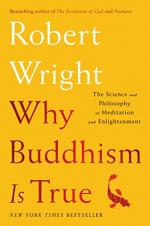|
This section contains 960 words (approx. 3 pages at 400 words per page) |

|
Summary
A man named Aggivessana once challenged Buddha on his teachings. He claimed that each five of the aggregates of the self, truly were his self. Buddha responded by comparing the self to a king, which is in control of his domain. He leads Aggivessana to admit that the self is in control of none of the five aggregates of the self. For example, one cannot change one’s physical form just by thinking it.
Indeed, Buddha’s arguments are confirmed in modern psychology. Many studies are all arriving at the conclusion that the conscious self has very little control over the self, and over one’s actions and decisions. A prominent example is in split-brain experiments. In brains, the left and right hemispheres are connected. However, when the connection is severed, they are unable to communicate with each other. When “walk...
(read more from the Your CEO is MIA Summary)
|
This section contains 960 words (approx. 3 pages at 400 words per page) |

|




